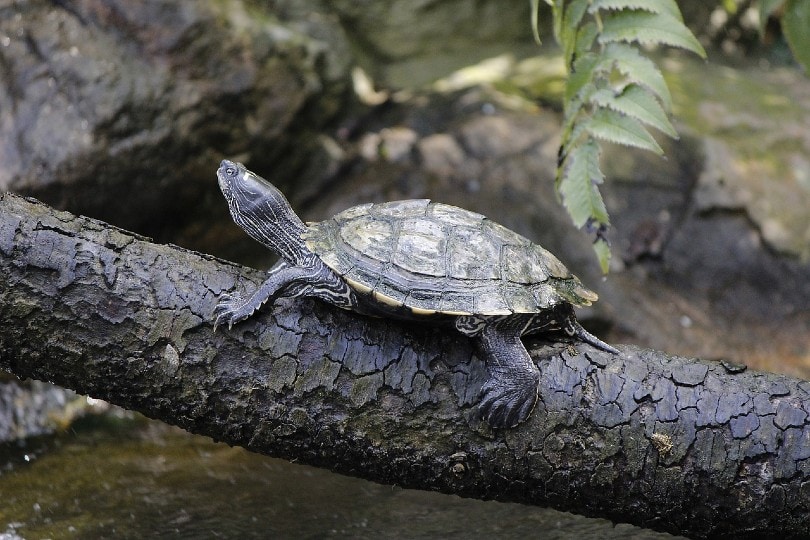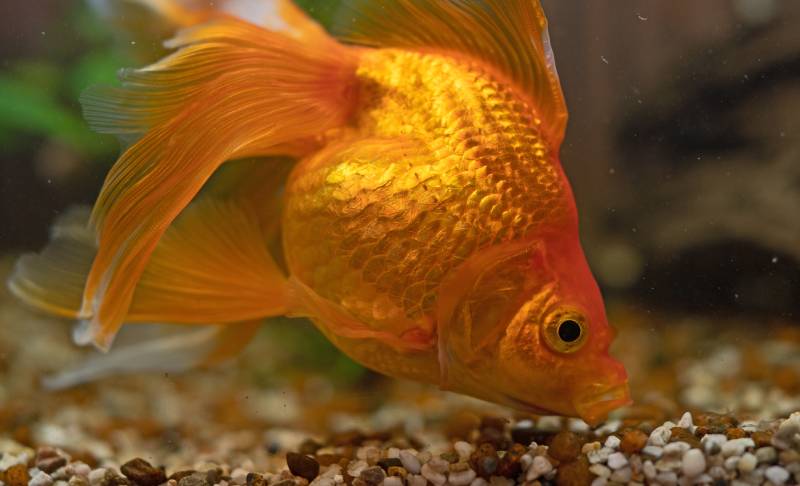Click to Skip Ahead
Turtles are ectothermic animals that rely on their external environment to regulate their body temperature. For the most part, turtles do well in temperatures that fall between 70°F-80°F. However, each species has slightly varying temperature preferences, and juvenile and sick turtles often need higher temperatures.
Monitoring and providing the correct temperatures in your turtle tank are extremely important, as temperature affects vital functioning. If a tank is too hot or too cold, it can affect activity levels, metabolism, and the ability to fight infections. So, it’s essential for turtle owners to understand the correct temperature range for their turtles and how to do their best to set up and maintain their tanks accordingly.

Normal Turtle Tank Temperature
Turtles do best with a range of different temperatures in their tank. Having a heat gradient in their tank helps them to regulate their body temperature more effectively. Keep in mind that temperatures will vary slightly depending on the turtle species.
Normal Turtle Tank Temperature in Air
The overall air temperature in a turtle tank should range between 72°F-77°F. Some species, including Yellow-Bellied Sliders, Spotted Turtles, and Musk Turtles can have their tank temperatures reach 80°F, but they’re usually perfectly content with tank temperatures in the upper 70s.
Normal Turtle Tank Temperature in Water
The water temperature should be a few degrees cooler than the air temperature so that turtles can cool off as needed. A good temperature range is 70F°-75°F. Again, some turtle species will prefer warmer water conditions if they originate from a warm climate.
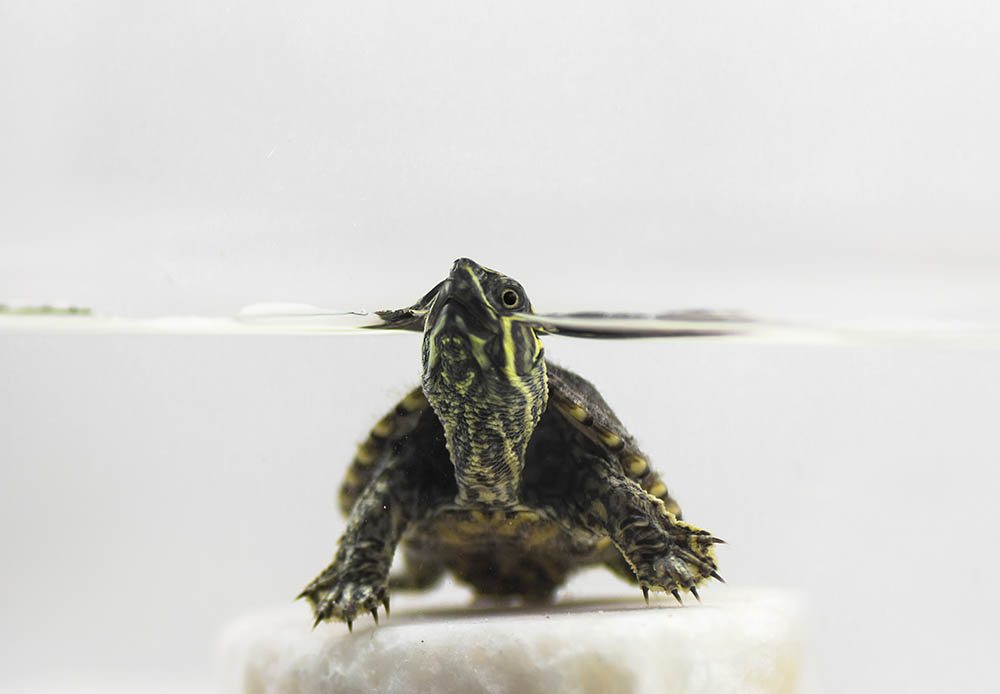
Normal Turtle Tank Temperature in Basking Area
Basking areas help turtles raise their internal body temperature. So, they should be several degrees warmer than the tank’s air temperature. A good basking area temperature range is 75°F-85°F. Because overheating can quickly lead to fatal consequences, it’s important to keep the basking area temperature at the appropriate level for your turtle species.
Normal Turtle Tank Temperature for Juvenile Turtles
Juvenile turtles typically need warmer temperatures than adult turtles. They usually need all areas of the tank to be around 5 degrees higher than adults. So, the overall heat gradient should be warmer for juveniles until they reach adulthood.

What Causes Temperature Changes in Turtle Tanks?
Several different factors affect temperatures in turtle tanks. One of the biggest factors is natural lighting. Sunlight can be a powerful heat source that can raise tank temperatures significantly. The tank will experience a greenhouse effect and trap heat. So, even if the external temperature surrounding the tank is cold, the tank’s internal temperature can still reach unsafe levels. Therefore, it’s important to set up turtle tanks at a safe distance from a window.
You can also change temperatures by using artificial heat and light sources, like heating lamps or heat mats. Using an aquarium heater will also help you change and regulate water temperatures. Greenery and hiding places can also affect temperatures. Hollowed-out logs can be slightly cooler than the tank’s air temperature. Greenery can also help lower temperatures and raise humidity levels inside the tank.
Lastly, you’ll have to be aware of your own climate if you live in an area with seasonal temperature fluctuations. You may have to adjust your heating lamp and basking area to accommodate colder weather.
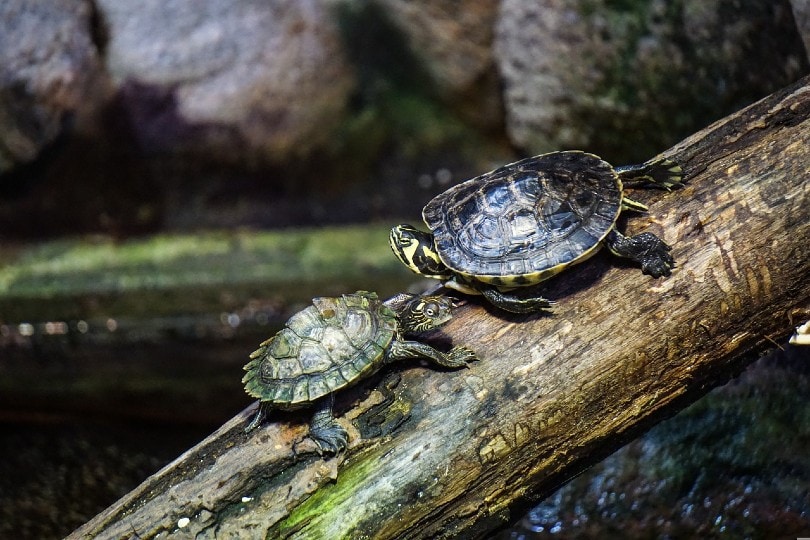

How to Adjust the Temperature in Turtle Tanks (3 Easy Steps)
Here are a few things you can do to adjust your turtle tank’s temperatures so that they’re at the ideal levels.
1. Add an Artificial Heat Source
Turtle tanks need some sort of heater for their basking area. The most popular options are heat lamps. Heat lamps provide both light and warmth to turtles. A 50-watt or 75-watt heat lamp bulb should suffice for smaller tanks, while larger tanks can have a 100-watt bulb.
When setting up a heat lamp, make sure that it’s positioned at a safe distance, so it doesn’t burn or injure your turtle. Some heat lamps have automatic timers that shut off in the evening. If your heat lamp doesn’t have a timer, make sure to turn it off at appropriate times, as light can affect your turtle’s behavior.
If you’re able to maintain a safe temperature gradient with natural sunlight, you can install a heat mat under the basking area for additional heat.
2. Relocate the Entire Tank
Sometimes, the best thing to do is move your tank to a new location. You can try moving the tank a little further away from windows or at a more central part of your home that’s away from doors that allow heat or cold drafts to enter every time they open and close. A room that gets less action may be able to provide a more consistent temperature range for your turtle tank.
3. Install an Aquarium Heater
Most turtles will benefit from having an aquarium heater for their water. When shopping for a water heater, make sure to find a high-quality heater with a lot of positive customer reviews. A low-quality water heater can be extremely dangerous if it isn’t able to maintain safe water temperatures consistently.
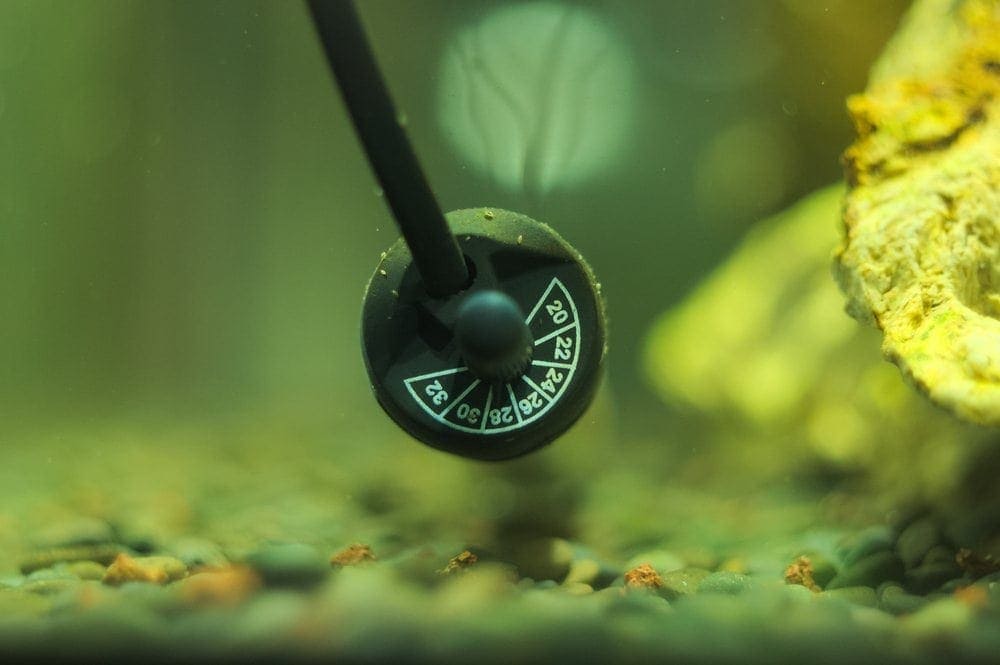
External Water Heaters vs Submersible Water Heaters
There are two main types of water heaters you can use for a turtle tank. A submersible water heater is a more common option. When shopping for a submersible water heater, make sure to find one with a sturdy exterior. It should also be able to be fully submerged in the water. For added safety, you can buy a plastic guard to keep it from shattering or breaking if your turtle accidentally bumps into it.
An external water heater is a good option if you want to save space or have a turtle that keeps knocking over a submersible water heater. An external water heater will heat up water by using a pump and tube to cycle water through the tank.

Frequently Asked Questions
What Temperature Is Too Cold for Turtles?
In general, a turtle’s tank temperature shouldn’t fall below 70°F. Cold temperatures can be very detrimental to a turtle’s health. It can slow down their metabolism and heart rate. Turtles can also experience cold stunning, which leads to shock or pneumonia. Keeping a turtle in cold water will inevitably make them sick and lead to death.
Do Turtles Need Light at Night?
Turtles aren’t nocturnal and are active during daylight hours. So, they don’t need a lamp during the night. Some heat lamps can cause disruptions in a turtle’s natural sleep cycle and cause stress and trigger illness.
How Can I Keep Turtles Warm at Night?
If your turtle tank’s temperature drops significantly whenever you turn off your heat lamp, you can try installing a heat mat under the basking area and turning it on at night. You can also install red or black bulbs in your heat lamps to radiate heat without emitting a bright light.
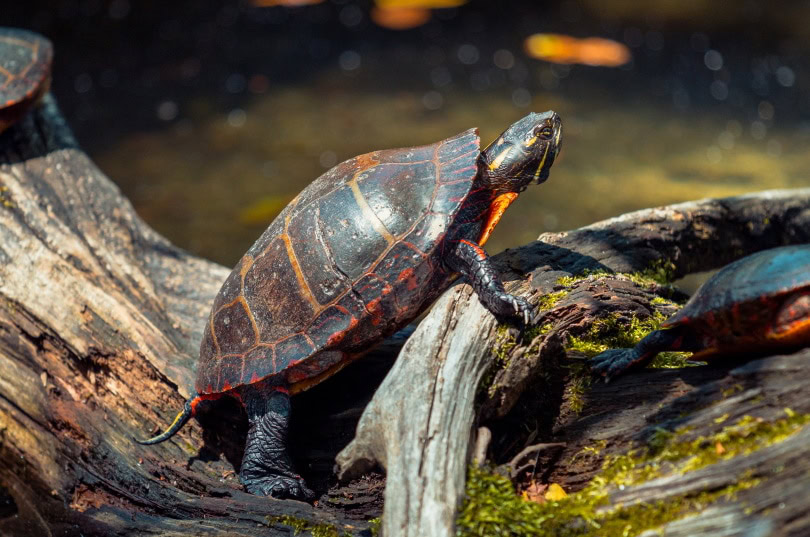
A Quick Reference Guide
| Tank Area | Temperature Range |
| Air Temperature | 72°F-77°F |
| Water Temperature | 70°F-75°F |
| Basking Area Temperature | 75°F-85°F |

Conclusion
Before bringing home a new turtle, make sure that you have a healthy heat gradient set up inside its tank. Turtles should have a nice basking area that they can rely on to raise their body temperature and a comfortable swimming area where they can cool down.
It’s also helpful to do some research on your turtle species’ natural habitat and temperature preferences. This will help you set up a tank that accommodates their needs, reduces the risk of getting sick, and enables them to live a long and happy life.
Featured Image Credit: Dieter444, Pixabay
